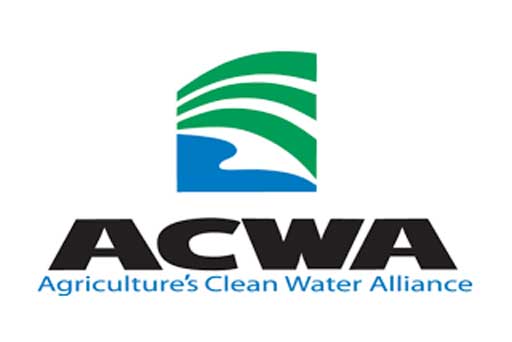ACWA’s strategic plan established three Core Pillars: Leader & Advocate, Innovate & Sustain, and Science to Solutions. The organization’s mission, programs and projects all align with these three pilars to provide members a clear direction for each year and for long-term.
Because ACWA’s efforts are science-based, its members and thier customers know results can be trusted. As ACWA members advance the organization’s mission and vision, farmers, landowners and lowans gain conficence that clean water and healthy soil are priorities for improved progress.
The ACWA Cod of Practice, featured in this issue, is part of the Science to Solutions pillar. Components of the pillars will be highlighted periodically in future newsletters.
Code of Practice for Fall Nitrogen Fertilization
Effective nutrient management on farmland is key to profitable crop production, and improvded water quality is the beneficiary. When excess nutrients leave a field and enter a river or stream, it is unsustainable for the farmer’s bottom line as well as for health of the water body.
The ACWA Code of Practice for Nitrogen Fertilization requires members to delay fall anhydrous applications without a nitrogen inhibitor until soil temperatures are 50 degrees F and trending lower. This reduces the risk of nitrogen loss from farm fields. Colder soils hinder the conversion of ammonium nitrogen to nitrate and nitrate moves easily with water flow. Farmers also utilize nitrogen stabilizers to help keep the ammonium nitrogen from converting to nitrate. ACWA members reaffirmed their commitment to the Code of Practice for 2022 at a recent meeting and have agreed to it annually since ACWA began.
“It is important that we remind Landus’ approximately 7,000 customers each fall about the timing of anhydrous applications,” says Molly Toot, Landus Cooperative administration leader and ACWA board vice president. “If every one of the ACWA farmer customers adhered to the Code of Practice, imagine the impact it could have on Iowa water quality. As we look to grow members statewide, our impact will be even greater in the future.”
The ACWA Code of Practice has been a membership requirement since 2001, long before the Iowa Nutrient Reduction Strategy (INRS) was established. The strategy has been in place since 2013 and calls for load reductions in nitrogen and phosphorus into Iowa’s waterbodies from point and nonpoint sources. The strategy is an outcome from the Gulf of Mexico Watershed
Nutrient Task Force Action Plan, created to reduce the Gulf hypoxia zone, an area of water with low oxygen that impacts aquatic life. All water that falls on Iowa land eventually ends up in the Gulf of Mexico.
The ACWA Code of Practice is in alignment with the INRS and through its implementation, the ag retail members are helping to reach the strategy’s goals for Iowa residents and those downstream.
Because ACWA members agree to the Code of Practice, they are holding themselves committed to improved water quality — a unique aspect of this organization.
ACWA members use the county soil temperature and forecast maps published by Iowa State University as a decision tool for beginning fall fertilizer applications. Each fall, members selfreport to the ACWA online database to validate their conformance to the Code of Practice. This year, reporting began October 15, about five days earlier than 2021.
Reporting by the numbers:
- 100 percent of ACWA members conformed to the code’s requirements
- 42 counties had at least one recording of soil temperature
- 92 percent reported using a nitrogen stabilizer with their nitrogen application
- 82 percent used the Iowa State Extension’s soil temperature website; remaining members used in-field temperature measurements.
In addition to the Code of Practice that addresses the timing and form of nitrogen, ACWA members encourage their farmer customers to follow the 4R Plus guidelines for nutrient management, such as adjusting fertilizer rates for optimal crop production and not overapplication, and installing edge-of-field practices such as tile line denitrification bioreactors and saturated buffers, and to adopt the use of fall-planted cover crops, all of which helps to reduce nutrient loss for land and water stewardship.
Other components under the Science to Solutions pillar include the ACWA water monitoring and tile drainage program. Annual data for the water monitoring program is on the ACWA website.
Visit the ACWA website to learn more about the various programs, projects, and practices that help improve soil health and water quality: www.acwaiowa.com. Agriculture’s Clean Water Alliance (ACWA) is a non-profit association whose mission is identifying and advancing solutions that reduce nutrient loss, build healthier soils, and improve Iowa’s waters. ACWA is recognized for its ability to build upon its members’ extensive relationship with farmers across Iowa.

